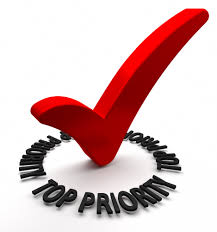Perhaps, you have accepted diabetes.
Perhaps, you cannot or will not.
Perhaps, you feel you are somewhere in the middle; You are “on it” sometimes and just don’t want to deal with it at other times.
If you are this far into “Transforming Diabetes” then you have agreed to make “your” diabetes the number one priority for the next 21 days. You may be asking….Why 21 days?? It has been shown in cognitive behavior psychology that it takes 21 days to shift physically, mentally and emotionally from one perspective to the next.
This process is about confronting a chronic condition head on.
When we do this we will are in proper alignment and we create the environment for change, growth, transformation, transcendence, illumination, revelation, healing…A CURE!
“Transforming Diabetes” has three goals:
1.) Engage in this process as a player eager to play and commit 100% for the 21 day time period. This means physically, mentally and emotionally accepting diabetes fully. Fake it until you make it. You can hold any thought you want. It takes practice but anyone can do it. The emotional response will follow. It also works in reverse. Don’t give up. Remember it is only for 21 days. If you slip mentally or emotionally out of this state then acknowledge it and get back in as soon as you can.
2.) Reduce suffering. This means reducing or eliminating low blood sugar, high blood sugar, worry, frustration, depression, anger, denial of what is, hopelessness, helplessness, grief, shame, guilt, etc. There are a lot of them. As suffering begins to ease we will uncover and begin to experience what is buried deep, has always been there, will always be there and is there now; peace, harmony, wholeness, health, balance, wisdom and integrity.
3.) Consistently, achieve A1C results below 7.0. A1C blood tests are done every 3 – 5 months and measures the average blood sugar over a 2-3 month period. After the initial 21 day immersion give yourself or your loved one 6 months to get there, especially if you have been running above the 8.0 range.
We talked a little bit about insulin in the previous posts. I want to now focus on blood sugar.
Yes, the immediate cause and problem with Type 1 diabetes is the absence of insulin. Well, actually that is not the immediate cause. The immediate cause, in almost every case, is a dysfunctional immune system response. However, what we are left with is a body that cannot or, more accurately, will not allow it to produce insulin.
Thank God for the guys who invented insulin.
I just wish they could have figured out to make it in pill form.
There must be a reason beyond a physical one for that.
The first injectable insulin allowed people to live longer than they would have.
There was no thought of keeping the blood sugar levels in any kind of normal range.
Blood sugar tests took days back then.
No.
The goal was to provide the missing key to the failed system. Get the body to accept the glucose that was coursing through its veins.
The insulin was crude and the needles were huge.
Back then the afflicted had to take multiple shots because the insulin was effective for only a few hours.
The destruction of the ability to produce insulin is a single point of failure to the human body.
There is no back up plan in place.
No insulin then you are going to die soon and it is not going to be pretty.
The rest of the body breaks down in an attempt to provide energy.
All available water is sucked out in an attempt to rid the blood stream of an overdose of glucose.
Think about what that must feel like.
It is like you are flooding your car with maple syrup and have drained the oil tank.
Going to shut down soon.
The goal, in the early days, was to survive; not die.
Too much insulin is a major problem as well. Too much insulin results in the blood sugar dropping below the low point of the normal range, 75mg/dl.
Get to 65 and feel shaky, confused, sweaty, anxious, hungry.
Hit 50 and the alarms start going off. More confusion, inability to complete a simple task, loss of judgement.
Below 30 and you are probably going unconscious.
Untreated, a person goes into coma and can experience a stroke, brain damage and death.
The body needs glucose in its blood stream at all times to survive.
Imagine taking an injection of insulin and getting stuck in an elevator with no food.
Problem.
Suffice it to say, the variations in blood sugar that a T1D experiences ranges from stressful to downright traumatizing.
Achieving consistent normal blood sugars as a T1D has always been and is today, in my opinion, pretty much impossible.
There are two many factors to account for in the system we have to re-create and oversee.
While the tools we have are 1000X better than when I was diagnosed 40 years ago, they are still not good enough to get us there.
In a normal body, the process is extremely dynamic.
A normal body is monitoring blood sugar every second.
Insulin is delivered in the exact precise dose to compensate for food.
There is no lag time for it to take affect.
There is no need to count carbohydrate and fat grams.
The normal body intuitively knows the number.
And there are more factors too numerous to name here.
An A1C of 7.0 means that the average blood sugar was around 150 over a 2-3 month period.
An A1C of 6.0 means an average blood sugar of 120 (the high end of normal).
My current goal is to get to 6.0.
My last few A1C’s have been in the high 6’s.
I am working this process to get to 6.0 as I did to get to 7.0.
One of my training Gurus once said……”Goals are for planning. Results are for pleasure.”
This quote reflects a mental and emotional perspective (Attitude) towards the concept of goal setting.
We have established our three goals.
Now, let’s release attachment to the attainment of these goals.
Instead, let’s understand that we have created and committed to these goals as a way of planting seeds for the results we wish to realize.
When we do realize results let’s not judge them.
Instead, let’s celebrate them and take pleasure in them.
Remember, this is a process and our goal is not to “arrive.”
Our goal is to get unstuck, to get moving and to create more control over the speed and direction we take.
This is the path towards a CURE.
Two agreements are required to move to the next step:
1.) We understand that goals are for planning. We have established our goals and now we will let them be and allow them to serve their purpose.
2.) We will not judge our results. Instead we will celebrate the results we achieve. We will take pleasure in the fruits of our labor.
Three To Do’s:
1.) Write free hand (at least one page) beginning with the words – I find it difficult to accept diabetes because……….
2.) Write free hand (at least one page) beginning with the words – If I accepted and took 100% responsibility for diabetes then…..
3.) Test your blood sugar at least 10X/per day. You will not know what is going on if you don’t. I say at least 10X because you may have to or desire to test more. If you have a continuous glucose monitor that is fine and it will assist you here but you still need to finger prick test 10X. During the next 21 days you must work to cultivate an attitude of wanting to test. You want to know where you are and how you are trending. This is a critical part of this system and process. This is non-negotiable. It is like we are in pre-season training camp getting ready for the regular season. It may be hard work but it is necessary to get in the kind of shape you need to be in to play. This means you need 300 test strips in a month. You need about $230 to cover the 21 days. Get it done. Have your doctor change your prescription to 300/month. I am not asking you to write any results down or chart at this time. I am telling you to get 300 strips for the month if you don’t already. I am asking you to cultivate an attitude of wanting to test. Stop here if you are not equipped or unwilling to test a minimum of 10X/day and come back when you are.
Yoga Practice:
I will be introducing yoga concepts and practices throughout. Find 5 minutes in the morning and 5 minutes in the evening to sit and be quiet. It should be in a secluded place where you will not be disturbed. Sit on the floor. you may use a meditation cushion or other cushions. You want your hips above your knees with legs crossed. If this is too uncomfortable you can sit in a chair with feet on the floor and back away from the chair. In other words, your back must be straight and unsupported by the chair. When you sit begin to be aware of your breathing. Take three deep breathes. In through your nose and out through your mouth. Relax and breathe normal for a minute. It helps to close your eyes but not required at first. Take three more deep breaths in through the nose and out through the nose. Relax and breathe normal. Thoughts will arise. Try not to get too attached to them. This is not a contemplation exercise. This is 5 minutes of sitting in silence breathing and relaxing. You may want to do this meditation exercise just prior to completing your writing exercises.
Wait 24 hours before moving on to the next session.

